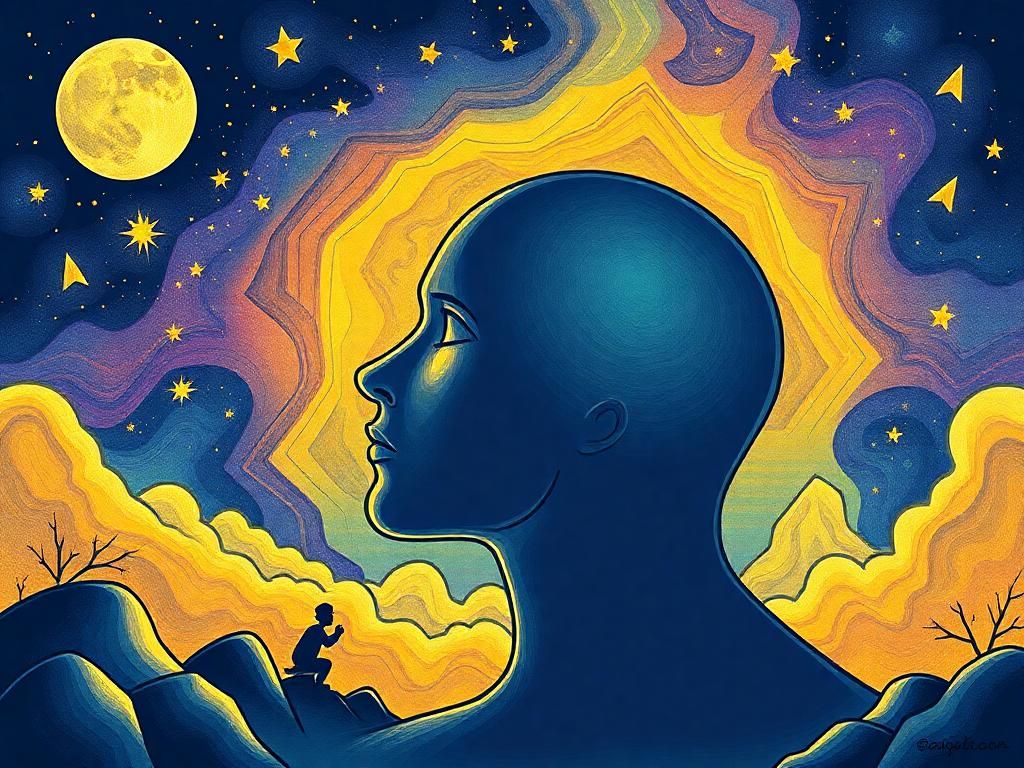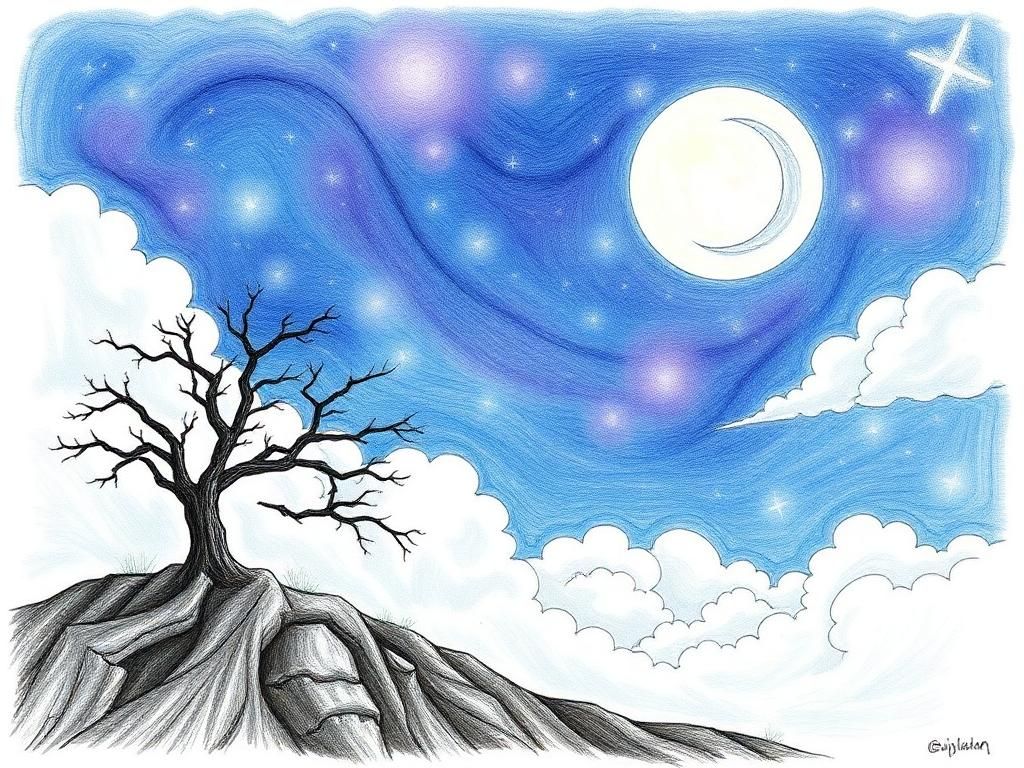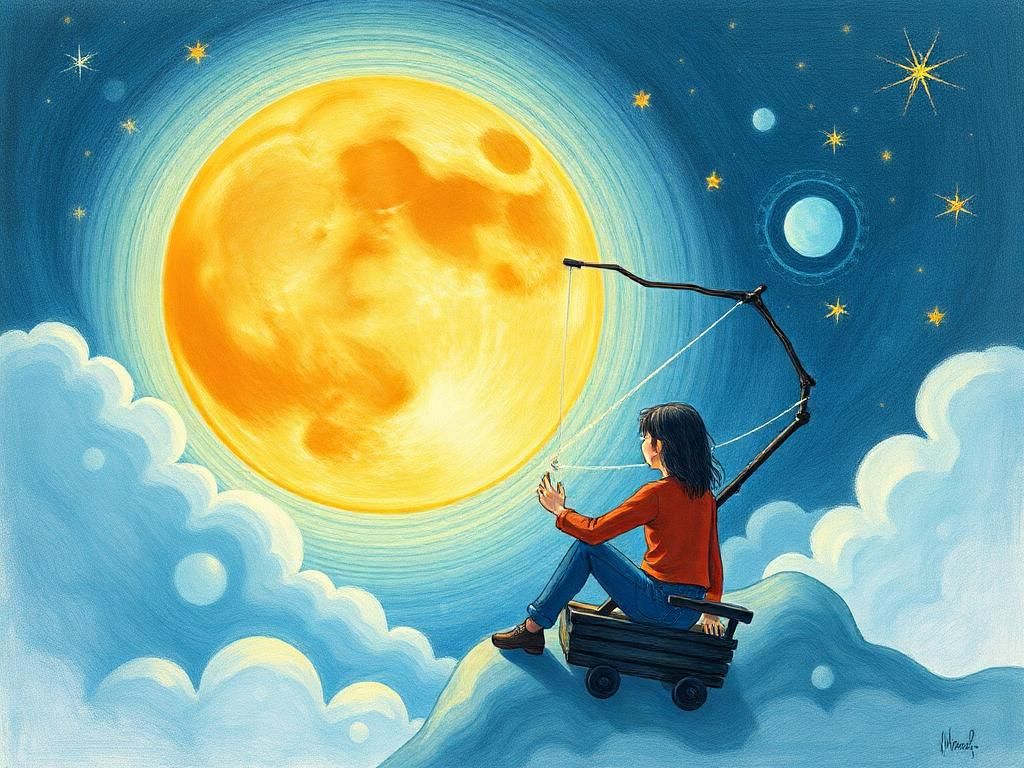Dream drawing is a captivating journey that merges the realms of our sleeping subconscious with artistic expression. It embodies the intriguing connections between dreams and creativity, allowing artists to explore their innermost thoughts and feelings through visuals. As we delve into the concept of dream drawing, we will uncover its historical context, psychological foundations, practical techniques, and the personal growth it can inspire.
Introduction to Dream Drawing
Definition of Dream Drawing
Dream drawing refers to the artistic practice of visually interpreting dreams. This unique art form stands apart from other artistic outlets by capturing imagery straight from the subconscious. Unlike traditional forms of art, dream drawing focuses on spontaneous and surreal content derived from the artist’s nighttime visions. This makes it an unfiltered expression of emotions, thoughts, and experiences.
Historical Context
The history of dream interpretation is interwoven with art, dating back to ancient cultures that believed dreams held significant meaning. Artists such as Salvador Dalí and Remedios Varo are renowned for their dream-inspired works, where they depicted surrealistic scenes brimming with symbolism. The surrealism movement of the 20th century particularly embraced dream drawing, revealing the power of dreams in creative output.
The Psychological Basis of Dream Drawing
The Role of Dreams in Creativity
Dreams provide a window into our subconscious mind, making them a powerful source of creativity. Artists frequently report that their best ideas come from dreams, as these nighttime narratives bypass the rational mind and tap into deep emotional truths. This connection between dreams and the creative process enables artists to access rich imagery that resonates on a personal level.
Psychological Theories
Sigmund Freud and Carl Jung are two pivotal figures whose theories on dreams significantly influence dream drawing today. Freud proposed that dreams are a reflection of repressed desires and drive, often materializing in symbolic forms. He emphasized that understanding these symbols can unlock hidden emotions and thoughts. In contrast, Jung focused on inclusiveness, introducing the concept of archetypes and the collective unconscious, asserting that shared human experiences manifest in dreams, ultimately guiding artistic expression.
Techniques for Dream Drawing
Preparing to Draw from Dreams
To embark on a dream drawing journey, it’s beneficial to start with a dream journal. Recording your dreams each morning enhances dream recall and helps you identify recurring themes and symbols. Here are some tips to remember your dreams vividly:
- Place a notebook and pen by your bed for immediate recording.
- Upon waking, lie still for a moment to retain dream fragments.
- Focus on emotions felt during the dream as these often hold the key to understanding.
Drawing Techniques
Once you have a dream documented, sketching the basic elements can be a great starting point. Incorporate the following methods:
- Sketch Basic Elements: Begin by outlining significant characters or objects that stood out in your dream.
- Use Color and Texture: Colors evoke emotions, so select hues that convey the feelings associated with your dream.
- Experiment with Mixed Media: Combining different materials can add depth and intrigue to your artwork.
Tools and Materials
For effective dream drawing, consider the following tools:
- Pencils: Ideal for detailed sketches.
- Charcoal: Great for bold outlines and shadows.
- Pastels: Excellent for vibrant and soft colors.
Additionally, select between digital and traditional drawing techniques based on your preference. Creating a conducive environment, such as a quiet space with minimal distractions, can greatly enhance your drawing experience.
The Process of Translating Dreams into Drawing
Analyzing Your Dream
The process of dream drawing begins with careful analysis. Identify the symbols and themes present in your dreams and reflect on their significance. By understanding the emotions tied to these symbols, you can create artwork that resonates deeply.

Creating Initial Sketches
Once you’ve analyzed your dream, brainstorming visual representations is crucial. Consider both free drawing and structured planning approaches, allowing your creativity to flow without constraints while also establishing a framework if desired.
Refining Your Artwork
The refinement phase is essential in dream drawing. As you revisit your sketches, recognize which elements resonate with your interpretation. Seek feedback from fellow artists or friends, and draw inspiration from other art forms to elevate your work.
Personal Reflection and Growth through Dream Drawing
Self-Discovery
Engaging with dream drawing can lead to profound self-discovery. Artists often uncover hidden thoughts and feelings, revealing insights into their identities. Case studies, such as artists sharing how dream interpretation has influenced their work, highlight the potential for personal growth through this art form.
Emotional Healing
The therapeutic aspects of dream drawing cannot be understated. Art therapy programs frequently incorporate dream analysis, harnessing creativity to promote emotional healing. Various resources are available, including workshops and retreats centered around this practice.
Sharing and Exhibiting Dream Drawings
Building an Artistic Portfolio
Creating a cohesive artistic portfolio is essential for showcasing your dream drawing journey. Carefully select pieces that reflect a unified theme, allowing viewers to engage with your vision and experience.
Participating in Art Shows
Art shows focused on subconscious themes provide an excellent platform for artists. Research local galleries or events that celebrate dream drawing or surrealism, and prepare effectively to present your work to a wider audience.
Online Platforms and Community
The digital landscape offers numerous avenues for sharing dream drawing art. Websites like Behance and platforms such as Instagram foster community among artists, facilitating collaboration and inspiration. Participating in online forums dedicated to dream art can enhance your exposure and feedback opportunities.
Conclusion
The Importance of Dream Drawing in Modern Art
Through the exploration of dream drawing, artists can embrace a unique intersection of their subconscious and creativity. It serves as a profound avenue for personal expression and emotional exploration, proving its significance in contemporary art.
Encouragement to Explore and Create
As you embark on your own dream drawing journey, remember to reflect, create, and share. The world of dreams offers limitless possibilities—embrace the inspiration waiting to be translated onto the page!

Additional Resources
Recommended Books and Articles
- “The Interpretation of Dreams” by Sigmund Freud
- “Dreams: Your Guide to Unconscious Creativity” by A. G. Camp
Online Courses and Workshops
Numerous online platforms offer courses on dream interpretation and artistic expression. Websites like Skillshare and Udemy provide a range of workshops tailored to aspiring artists venturing into dream drawing.
Community Forums and Support Groups
Joining communities focused on dream art can create valuable connections among like-minded individuals. Look into groups on Facebook or Reddit dedicated to artistic explorations of dreams.
| Category | Details |
|---|---|
| Definition | Artistic interpretation of dreams |
| Historical Artists | Salvador Dalí, Remedios Varo |
| Psychological Theories | Freud, Jung |
| Key Techniques | Dream journal, sketching, mixed media |
| Emotional Benefits | Self-discovery, healing |
| Sharing Platforms | Behance, Instagram |
Frequently Asked Questions
1. What is dream drawing?
Dream drawing is a creative practice that involves interpreting and visually representing dreams through art.
2. How can I improve my dream recall?
Keep a dream journal by your bed, and write down your dreams first thing upon waking to enhance recall.
3. How are dreams related to creativity?
Dreams tap into the subconscious, often revealing profound insights and vivid imagery that can inspire artistic expression.
4. Which artists are known for dream-inspired works?
Artists such as Salvador Dalí and Marc Chagall famously incorporated elements of their dreams into their art.
5. What tools do I need for dream drawing?
Pencils, charcoal, pastels, and a sketchbook are essential tools for those exploring dream drawing.
6. How can dream drawing facilitate emotional healing?
Engaging with dreams through art allows for therapeutic exploration and understanding of one’s feelings and experiences.
7. Are there classes for dream drawing?
Yes, platforms like Skillshare and Udemy offer courses on dream interpretation and art techniques.
8. How can I find a community for dream drawing?
Online forums and social media groups focused on surreal or dream art can connect you with like-minded individuals.
9. Can I mix different art styles in my dream drawing?
Absolutely! Experimenting with mixed media can enhance your artwork and add depth to your visual interpretations.
10. What should I consider when displaying my dream drawings?
Curate your artwork around a cohesive theme, ensuring that your collection resonates with viewers.
